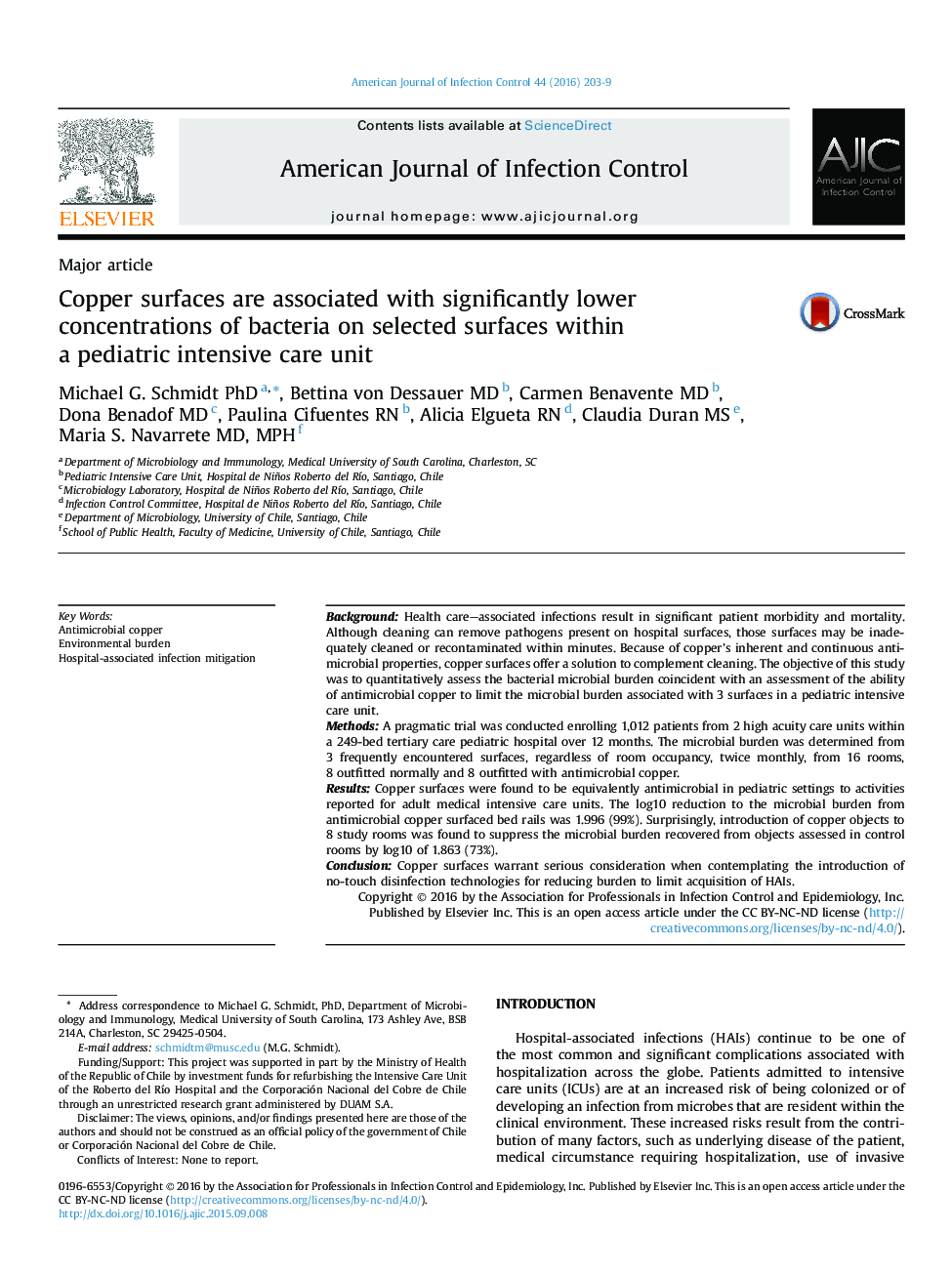| کد مقاله | کد نشریه | سال انتشار | مقاله انگلیسی | نسخه تمام متن |
|---|---|---|---|---|
| 5867544 | 1563463 | 2016 | 7 صفحه PDF | دانلود رایگان |

- The built hospital environment serves as a tremendous and continuous reservoir of microbes capable of colonizing and infecting patients.
- Cleaning, hand hygiene, and infection control bundles while effective cannot completely eliminate this risk.
- Augmenting the built hospital environment with continuously active antimicrobial surfaces fabricated from U.S. Environmental Protection Agency-registered copper surfaces can significant lower the microbial burden, helping to augment existing infection control strategies.
- Copper surfaces were found to be significantly effective in lowering the burden found in multibed rooms associated with pediatric intensive care units.
- Copper surfaces warrant serious consideration when contemplating the introduction of no-touch disinfection technologies for reducing burden to limit acquisition of health care-associated infections.
BackgroundHealth care-associated infections result in significant patient morbidity and mortality. Although cleaning can remove pathogens present on hospital surfaces, those surfaces may be inadequately cleaned or recontaminated within minutes. Because of copper's inherent and continuous antimicrobial properties, copper surfaces offer a solution to complement cleaning. The objective of this study was to quantitatively assess the bacterial microbial burden coincident with an assessment of the ability of antimicrobial copper to limit the microbial burden associated with 3 surfaces in a pediatric intensive care unit.MethodsA pragmatic trial was conducted enrolling 1,012 patients from 2 high acuity care units within a 249-bed tertiary care pediatric hospital over 12 months. The microbial burden was determined from 3 frequently encountered surfaces, regardless of room occupancy, twice monthly, from 16 rooms, 8 outfitted normally and 8 outfitted with antimicrobial copper.ResultsCopper surfaces were found to be equivalently antimicrobial in pediatric settings to activities reported for adult medical intensive care units. The log10 reduction to the microbial burden from antimicrobial copper surfaced bed rails was 1.996 (99%). Surprisingly, introduction of copper objects to 8 study rooms was found to suppress the microbial burden recovered from objects assessed in control rooms by log10 of 1.863 (73%).ConclusionCopper surfaces warrant serious consideration when contemplating the introduction of no-touch disinfection technologies for reducing burden to limit acquisition of HAIs.
167
Journal: American Journal of Infection Control - Volume 44, Issue 2, 1 February 2016, Pages 203-209